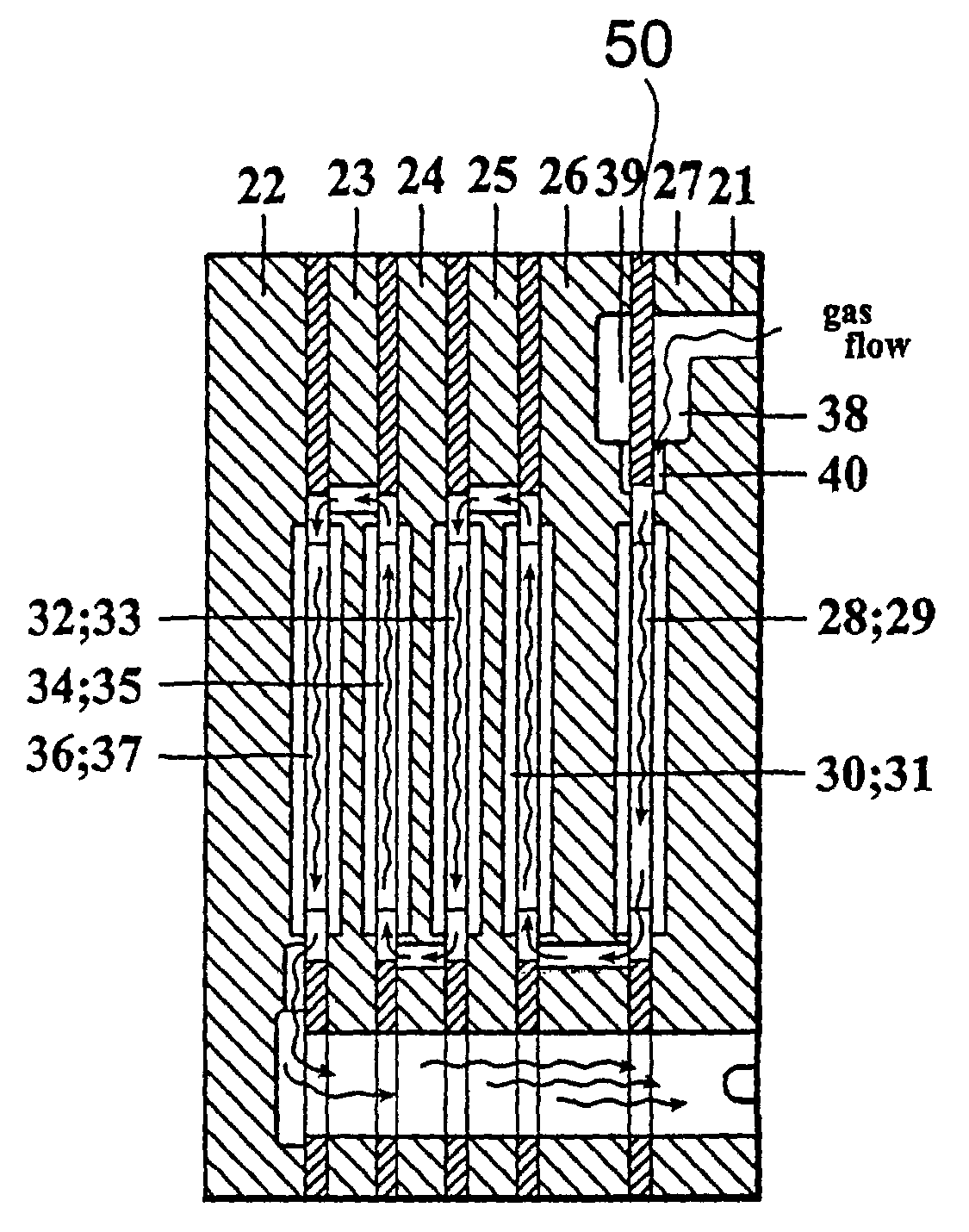Method and apparatus of growing a thin film
a thin film and film technology, applied in the direction of crystal growth process, chemical vapor deposition coating, coating, etc., can solve the problems of poor heat transfer from the heated surface to the substrate by conduction through the low-pressure gas and by the convection of the low-pressure gas, the reactor presented in u.s. pat. no. 5,879,459 is expensive for batch processing of substrates, etc., to increase the throughput of the ald process, simplify the requirements for reaction space tolerance tolerance tolerance toleran
- Summary
- Abstract
- Description
- Claims
- Application Information
AI Technical Summary
Benefits of technology
Problems solved by technology
Method used
Image
Examples
Embodiment Construction
[0043]One embodiment of the present invention involves a method of growing a thin film onto a substrate, in which method a plurality of substrates are placed in serial alignment in a reaction chamber formed by an elongated reaction channel and each actual substrate is subjected to surface reactions of a plurality of vapor-phase reactants according to the ALD method to form a thin film.
[0044]A typical pulsing sequence used for ALD growth of thin film consists of four basic steps:[0045]1. first source chemical pulse[0046]2. first purging period[0047]3. second source chemical pulse[0048]4. second purging period
[0049]These four steps are repeated until a thin film of predetermined thickness is obtained. The purging periods may comprise of inert gas purging optionally combined with or replaced with a vacuum pump down of the reaction space. An advanced pulsing sequence may comprise, e.g., three different source chemical pulses that are separated from each other with reactor removal period...
PUM
| Property | Measurement | Unit |
|---|---|---|
| angle | aaaaa | aaaaa |
| angle | aaaaa | aaaaa |
| angle | aaaaa | aaaaa |
Abstract
Description
Claims
Application Information
 Login to View More
Login to View More - R&D
- Intellectual Property
- Life Sciences
- Materials
- Tech Scout
- Unparalleled Data Quality
- Higher Quality Content
- 60% Fewer Hallucinations
Browse by: Latest US Patents, China's latest patents, Technical Efficacy Thesaurus, Application Domain, Technology Topic, Popular Technical Reports.
© 2025 PatSnap. All rights reserved.Legal|Privacy policy|Modern Slavery Act Transparency Statement|Sitemap|About US| Contact US: help@patsnap.com



